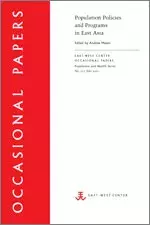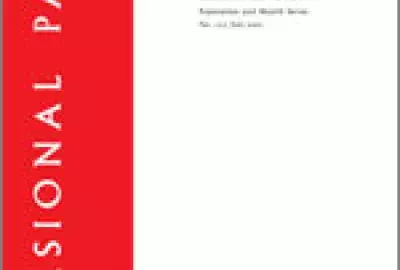Error message

The papers in this volume examine the population policies in six East Asian economies as part of a larger project examining the links between population change and economic development in the most dynamic region in the world. The economies had varied approaches to population policy, but all achieved unusually fast fertility decline. Rapid social and economic development played a primary role in determining birth rates, but effective intervention by the state accelerated the transition to low fertility levels. A second volume, Population Change and Economic Development in East Asia: Challenges Met, Opportunities Seized, forthcoming from Stanford University Press, examines the economic consequences of population change in East Asia. Support for this project was provided by the United States Agency for International Development (USAID), the Rockefeller Foundation, the William and Flora Hewlett Foundation, the World Bank, and the Ministry of Foreign Affairs (MOFA) of Japan. Support from USAID and MOFA was provided as part of the Common Agenda for Cooperation in Global Perspectives. |
The papers in this volume examine the population policies in six East Asian economies as part of a larger project examining the links between population change and economic development in the most dynamic region in the world. The economies had varied approaches to population policy, but all achieved unusually fast fertility decline. Rapid social and economic development played a primary role in determining birth rates, but effective intervention by the state accelerated the transition to low fertility levels. A second volume, Population Change and Economic Development in East Asia: Challenges Met, Opportunities Seized, forthcoming from Stanford University Press, examines the economic consequences of population change in East Asia. Support for this project was provided by the United States Agency for International Development (USAID), the Rockefeller Foundation, the William and Flora Hewlett Foundation, the World Bank, and the Ministry of Foreign Affairs (MOFA) of Japan. Support from USAID and MOFA was provided as part of the Common Agenda for Cooperation in Global Perspectives. |





